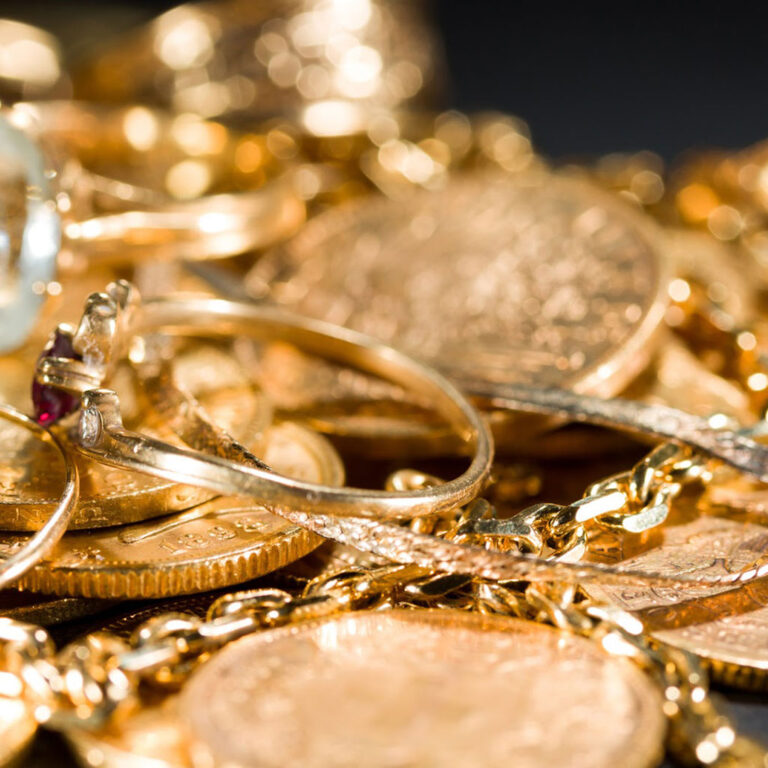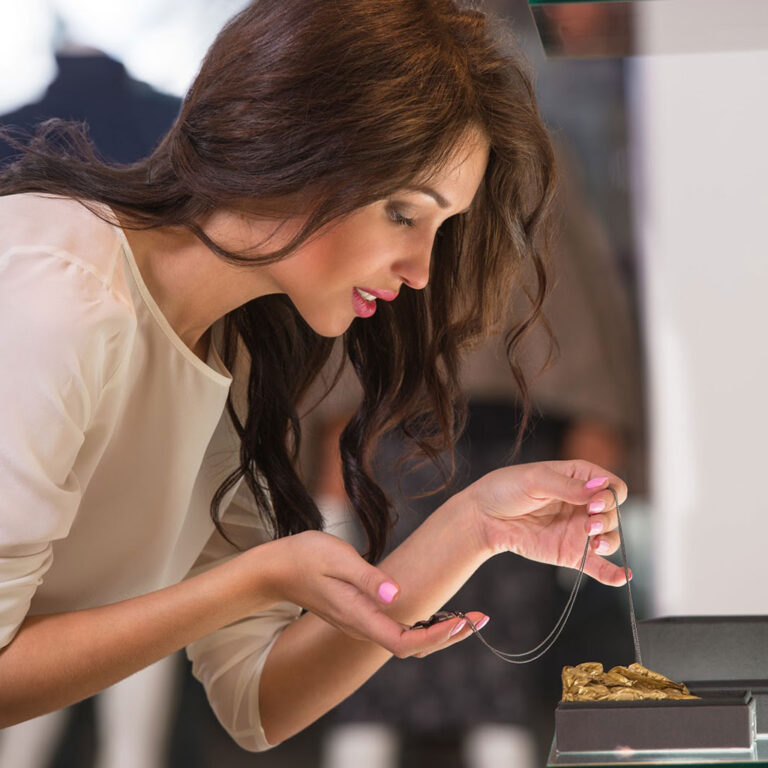Japanese Gold
What is Japanese Gold?
Japan has a long, rich history in gold tradition. The country became world renown for it’s love of gold in the thirteenth century, when Marco Polo, an explorer and merchant from Venice, toured the palace of the King of “Zipangu” and wrote to his countrymen that it “has tremendous quantities of gold.” The country’s love of gold was forever commemorated in Polo’s book, The Adventures of Marco Polo. From that point on, Japan was known as the “land of gold” and explorers and travelers would flock to the island and marvel at its golden palace.
The island’s rich history with gold continued until World War II, when its once-prosperous mines began to shut. The Hishikari Gold Mine is still in existence, and has been since 1985; it’s still known, famously, as one of the highest-grade gold mines on earth.


Modern Day Japanese Gold Jewelry
In modern day Japan, gold jewelry is normally 18 karat, which means that it’s made of 75% gold and 25% other metals, most commonly copper and silver.
Coins
Japan has minted many interesting-looking collectable coins, dating all the way back to the 1600’s. In this section we’ll take a look at various coins that are considered valuable among collectors. As with any coin, it’s important to work with a reputable dealer to ensure that you’re getting the best deal, and also to ensure that the coin is not counterfeit – fakes do exist, especially with older coins.
- Japanese Cash Coin, 1768 to 1860, 4 Mon 11 Wave & 4 Mon 21 Wave
- Japanese Oval Coin, 1835 to 1870, 100 Mon Tempo Tshuho
- Japanese Bronze Coin with Crow, 1938 to 1940, 1 Sen
- Japan Copper-Nickel, 1982 to date, 500 Yen
Gold Coins
- Japanese Yen, 1897 to 1932, 5, 10, and 20 Yen

What parts of Japan does Japanese gold come from?
Japan is known, historically, for its gold production.
Starting in the 1600’s, the Sado Kinzan was one of Japan’s biggest, most productive mines – and it reigned as such for nearly 400 years. Then in 1915, gold was found in Hokkaido; this is how the Konomai mine came to be. By the 1980s, most of Japan’s gold mines and deposits were closed. In present day Japan, the Hishikari gold mine in Kagoshima, southern Kyushu holds the spot as Japan’s premier gold producer, and one of the highest-grade gold mines on earth – it is also the last remaining gold mine in the country.
Further cementing its spot in Japanese gold tradition, Hishikari is known as one of the greatest gold mines currently in existence – because of the grade of gold the mine produces. The Hishikari mine produces 40 grams of gold per every one ton of ore. Hishikari has been a major producer since opening in 1985, producing seven to ten tons of gold every year. That’s more than 200 tons in the past three-and-a-half decades. It’s also more than double what the Sado and Konomai mines were producing.
And, as for the future of the mine, geologists are certain it’ll produce gold in the decades to come.
How many karats is Japanese gold?
Japanese gold is most often 18 karat, though it can also be 14 karat. Percentage-wize, 18 karat gold is 75% gold, while 14 karat gold is 58.5% gold. Gold jewelry produced inside the country sometimes has a hallmark or stamp composed of Japanese characters.
How to tell if it’s Japanese gold or not?
Like with any gold jewelry, there are a few different ways to see if your Japanese gold is real.
- First, look for markings, stamps, or hallmarks. These are the characters or numerals that are stamped into the bottom of a piece of jewelry. Japanese gold may contain Japanese characters, so those are good to look for as well.
- Next, real gold is heavier than fake gold, so take the gold in your hand, hold onto it for a moment, and get an idea of its weight.
- And, lastly, real gold will not turn your skin green or blue. The fake stuff will. So, look out for a ring of green or blue around your neck, wrist or fingers because that is a tell-tale sign that your gold is not real.
The BEST way to see if your Japanese gold is real is to take it to a professional, who will test it for you.
Can you sell Japanese gold in the United States?
Yes. Keep in mind, Japanese gold jewelry is most often 18 karat, but it can range in karat and in value, which is why it’s important to work with a trusted dealer when you’re looking to buy or sell.
Can you buy Japanese gold jewelry?
Yes. Whether you’re looking to purchase a Japanese coin or a piece of Japanese gold jewelry, you have a few different options. You can purchase gold jewelry pieces and collectable coins in Tokyo, and all throughout Japan, or you could purchase your piece on the internet. As always, it’s important to work with a reputable, trusted dealer so you are given the most fair deal and the most fair assessment.
Choose Crown Gold Exchange
Crown Gold Exchange holds the utmost respect for you and your valuables. When you visit one of our locations, we make sure that you feel welcome, and that your property is protected. We use industry-standard equipment to ensure accurate measurement of your valuables, and we have a special process to keep your valuables safe. Our accuracy enables us to offer you top dollar, and we have several different payment methods available for your convenience, so you won’t be waiting around to get paid.
Crown Gold Exchange will purchase any kind of gold you bring us, including 8-karat, 10-karat, 14-karat, 18-karat, 21-karat, 22-karat, 24-karat, or anything else. We buy gold bars, gold bullion, gold jewelry and some gold plated items like pocket watches. If you happen to be in possession of an exclusive piece made by a top gold designer such as Cartier, Tiffany, Rolex, or Patek Philippe, we will often pay more than the weight of the item. Such special pieces often command a higher price on the secondary market due to their superior craftsmanship.
